
I didn’t think twice about the man that sat next to me. Mid-twenties, Indian, red and white striped polo shirt.
The Air Asia flight from Colombo, Sri Lanka to Kuala Lumpur, Malaysia was mostly empty, so right before takeoff I switched seats and got my own set of 3 seats across the aisle. And thought of him even less, absorbed as I was in a new book.
Until he screamed.
It was about an hour into the flight. More of a really loud wail, actually, the kind you’d expect a man to make upon waking suddenly and seeing his leg chewed off by a giant undulating larvae. The kind of loud wail that makes the hairs on the back of your neck stand up and your eyes widen like saucers.
Everyone on the plane heard it. Heads snapped around, people looked back over their seats, passengers stood up to investigate.
Then the man went into seizure. Legs and arms flailing, his bare feet sticking out into the aisle and spastically jerking every which way. Quite dramatic, really.
Folks rushed over from various parts of the plane. The poor doll-like Malaysian stewardesses looked horror-stricken, although still rather pleasant-looking in their tight red miniskirts.
One man, also in his twenties, seemed to recognize the symptoms and jumped on the guy. Apparently there was concern he might choke on his own tongue. Preventing this while a guy is completely out of control and jerking limbs all over the place is an interesting task.
The man fell to the floor, his feet still flopping around in the aisle. Then he’d calm a bit. Then start up again, feet kicking wildly.
They tried to get him to sit up. This took a while, during which time my former seatmate barfed all over my former seat. Nice touch. The smell of vomit wafted through the enclosed cabin.
One of the stewardesses ran up with what looked like a fire extinguisher. WTF?! And then I saw the tube and mask contraption attached, and realized it was to provide oxygen. While several people held him they fiddled with the valve, sniffing into the mask to see if anything was coming out. I was secretly hoping it might be laughing gas.
This seemed to do the trick. The man stabilized, then passed out in a sitting position, apparently over his episode.
Within minutes, the stewardesses resumed food service, the smell of cooked food competing with other odors. All in a day’s work, apparently.
And I continued my book.

My front row view (note my backpack wedged over the engine)
It all happened so quickly.
The bus driver was a madman, half Formula 1 and half demolition derby driver, except helming a multi-ton relic of a bus with a loud engine, an aggressive horn, and a steroid-enhanced foot working the pedals. When we’d first left Trincomalee he had drawn some Buddhist symbol on the windshield directly in his line of sight (looked like a trident–you can kind of see it in the picture above), and while I initially assumed this to mean he was a conscientious religious man, I soon learned otherwise: that with his maniacal driving he needed all the divine protection he could get.
I was in the front passenger seat of the bus, opposite the driver and directly behind the bus’ perpetually open door, enjoying the tropical Sri Lankan view both ahead and through the window.
On the busy, narrow potholed highway into the country’s interior, we found ourselves behind a somewhat slower fuel truck. A bright red one, with the words “LIQUID FLAMMABLE” clearly written in giant block letters on the back. Yeah.
This is not the kind of vehicle you want to tailgate at high speed, even if you do really, really want to pass him. Alas.
The fuel truck slammed on the brakes. I don’t know why. There was absolutely no way our giant bus could stop in time to avoid a collision, and here I was first in line to smash into the fuel tanker’s rear and ignite the inevitable ensuing fireball. Amazing how quickly your mind can calculate the physics of a situation like this and instantly return the result: you’re screwed.
Our bus driver instantly came to the same conclusion. And he both slammed on the brakes and jerked the wheel hard, directly into oncoming traffic.
The bus lurched so hard that all the wheels on the driver side came off the ground, and I remember seeing the guy in the seat across the aisle from me, who until that moment had been peacefully sleeping, flying out into the aisle. Apart from the danger of the situation, I recall thinking that this was one of the most hilarious things I’d ever seen. The look of pure shock and confusion on his face as he flew to my side and tried to catch himself was priceless.
We came so close to clipping the back of that fuel truck that I could have reached out and touched it without fully extending. It’s amazing that we didn’t roll over at this point given our speed and how harsh the turn. But to his credit, the driver yanked the wheel back the other way and the airborne wheels slammed back down hard, the bus veering from the opposite side ditch and coming to a stop directly in front of another truck screeching to a halt in the other direction.
After a couple seconds of tense silence, we continued. As our driver sidled up to the cabin of the fuel truck, he honked and glared for a few moments. The fuel truck driver glared back. And then everyone went on their way.
So that was the morning.
In the afternoon…I’m actually not entirely sure how this happened. Thanks to a series of serendipities and strange random events, I somehow found myself inside the main monastery seated privately in a small room with the head Buddhist monk for the entire sacred temple region, a spry 92-year old man garbed in monastic orange. Totally amazing.
I’m told this is very rare and that I was very lucky today. I agree.

(I didn't take this shot, but it's about right)
After 36 straight hours of travel, the logical thing to do would have been to find a hotel and rest in Colombo for my first day in Sri Lanka.
Fat chance.
No sooner was I off my 5th flight and through immigration that I found the local bus for the 90 minute sweaty ride to the train station. And here the traveling began in earnest.
The station was packed with thousands, and when the train that would take me to Kandy in the central highlands chugged in, the jostling began. People were positioning themselves for a run at the doors. For what I didn’t know, but I can jostle with the best of them, big backpack and all. Or so I thought.
The surge: hundreds of people rushing into every possible train door, everyone pushing and shoving everyone else, a mass ruthless frenzy to get on the train first. Pushing, pulling, shoving, elbowing, you name it.
I thought I’d done pretty well and was one of the first ones on the train. And overall I was. But not fast enough: every available seat was taken. Some had already been filled from the previous station, so it wasn’t an empty train to begin with, but it all happened in probably less than 5 seconds total (no exaggeration). Unbelievable.
Standing room only. Hot, humid air. No air-conditioning. A metal wagon cooked by the tropical sun while hundreds inside breathe and sweat, packed close together. And after 5 flights already I’m missing the comfort and space of economy class–the lap of luxury compared to this sweltering misery.
For 20 long minutes we waited, sweating. And sweating. The wagons got more and more full, to the point where people were standing packed in every entryway, doors open. I’d always wondered at pictures of trains with people hanging out the doors, until realizing that a) yes, the trains get that packed, b) it’s less hot by the door than inside the wagon, and c) you get a scenic view instead of the back of five other people’s heads and random limbs trying to hold on to whatever fixture possible.
Mercifully, the train started. I had carved out a spot directly at the partition between the main seating compartment and the door, so by turning my head left I could see the whole compartment, and to the right I was just tall enough to see over a half dozen heads and watch a little narrow window of scenery go by through the open door. The latter is probably the only thing that saved my sanity.
It felt like forever to the first next station, but it was probably around 40 sweaty jostling minutes. My hope had been that people would get off here and that there would be some seating space opening up. Hahaha, such naive hope.
When the train stopped, more people entered. I don’t know how. It felt like being inside a compactor, squeezing tighter and tighter. I was shoved clear up against the compartment frame, someone else’s briefcase was wedged between my legs, and there were people pressed up against me from all sides, with not an inch of space to move.
Normally, in trains I keep a wary eye out for pickpockets. This was no longer an issue: I couldn’t have reached around to my pocket if I tried, and the effort would have required displacing at least 3 other people. Not to mention that fitting a hand inside my pocket at this point would also mean pushing someone else’s hip or butt to make enough space for it to fit. Yes, we were stuffed in that tight.
Which makes me think I may have misheard the name of this train. I thought it was named the Intercity Express, but that may have been my mind refusing to accept its real name of Into a Sardine Press.
And you know those guys hanging out the doors on the side of the train? Now I realize they’re the lucky ones: plenty of space and natural air-conditioning to help keep them cool.
Five interminably long hours later, I stumbled out of the train and into Kandy, my final destination. I drank half a gallon of liquids, went on a shaky walk to rehabilitate my legs and limbs from the evil plane/train combo, and despite a full plate of chicken in front of me I nodded off and fell asleep during dinner, to the amusement of the other restaurant patrons.
And thus ended my first day in Sri Lanka.
20 years ago today, on November 9th, 1989, the Berlin Wall fell, and history changed again.
If one were to select one city to exemplify the struggles of the 20th Century, Berlin would certainly be a prime candidate.
Germany’s aggressive turn-of-the-century empire was ruled from Berlin, leading to the devastating losses of WWI and, some scant 15 years later, the ascendancy of Hitler’s National Socialism (Nazi) Party starting in 1933. In 1936 Berlin hosted the Olympics and of course was the seat of German power for WWII from 1939 to Germany’s loss in 1945.
But to describe Berlin’s story from that point simply as a “loss” is to radically downplay the city’s experience.
Starting from the Allied raids in 1943 (involving sometimes up to 1,000+ bombers per night) to the shelling of the city in the final Battle of Berlin, more than half of downtown Berlin was completely laid to waste, a destruction whose human casualties were vastly amplified by Hitler’s refusal to allow any evacuation of German civilians.
As the war drew to a close, it is Stalin’s Red Army, and not the Allies, that rolled in from the east to defeat the last of Germany’s army in Berlin. In the final days, Hitler committed suicide in the bunker underneath Berlin’s Reich Chancellery on April 30th, 1945, and two days later on May 2nd Berlin’s Germans capitulated to the Red Army.
The Soviets were not gentle invaders. Apart from the brutal and often indiscriminate murder of civilians and refugees, it is estimated that between 130,000 – 1,000,000 German women and girls were raped, some as young as 8 years old (with suicides among the traumatized victims running as high as 10%). This did not stop until two and a half years later, when Soviet troops were confined to carefully guarded camps.
In addition, when the Allies arrived in Berlin a month after its fall, they found a completely inoperative infrastructure (no garbage disposal, sewage, etc.), and the average Berliner barely subsisting above starvation at some 800 calories a day.
(I describe these things not to downplay Germany’s ultimate responsibility for the war nor their own atrocities in its conduct, but simply as an honest representation of the historical events that Berliners lived through.)
Although Berlin was deep inside the German territory that the Big Three (Britain, U.S., Soviet Union) had agreed would be administered by the Soviets after the war, Berlin as the capital was also divided among the Allies. Thus, the half of Berlin that was Allied-controlled (later known as West Berlin) lay in the heart of Soviet-controlled Germany, one street over from Soviet-controlled Berlin (East Berlin). This led to two very important post-war developments.
In 1948, the Soviets blocked all overland routes from West Germany across its territory to the Allied-administered West Berlin, with the intent to apply enough social and political pressure to force the Allies to cede their part of the city. Instead, the United States and Britain over the course of a year flew over 200,000 cargo flights supplying some 13,000 tons of food a day (plus petrol and other supplies) into West Berlin. At its height, what became known as the Berlin Airlift saw a cargo plane land in West Berlin every 30 seconds. Outmaneuvered, the Soviets reopened Allied rail access to Berlin some 15 months later.
What Berlin became famous for, however, is the Wall.
Run by the Socialist Unity Party under the watchful eye of the Soviets, East Germany was not nearly as pleasant and prosperous a place to work and live in than its capitalistic counterpart in the West. Although all borders between East Germany and West Germany had been closed (to East Germans) for some time, those who wished to emigrate could easily do so by traveling to East Berlin, walking across to West Berlin, then taking a flight out to West Germany. It is estimated that prior to 1961, some 3.5 million East Germans emigrated to West Germany, especially the young and well educated.
Soviet leader Nikita Krushchev proposed a simple solution: build a wall. At midnight on August 13th, 1961, East German troops closed all crossings from East Berlin to West Berlin, tore up streets, closed metro stations, and installed barbed wire and fencing around all 124 miles of West Berlin, including the 27 miles directly through the middle of the city. From there, the barriers were over time further refined and improved with watchtowers, multiple layers of wire and walls, patrols and dogs, trenches and beds of nails. East German soldiers were ordered to shoot any East Germans trying to cross into West Berlin (whereas West Berliners could freely travel to East Berlin and back).
The wall stopped the East German emigration problem cold, from 3.5 million in the years prior to just a few thousand successful escapes in the decades following (and several hundred killed in failed escape attempts).
Although the erection of the Wall was a clear Soviet violation of the agreements between the occupying forces, President Kennedy’s administration, right on the heels of the Bay of Pigs fiasco, saw the new Wall as a convenient means to defuse Cold War tensions (as Kennedy is quoted as stating to his aides “a wall is a hell of a lot better than a war”). After some token official protests, the United States informed the Soviets that they accepted the new Berlin Wall as a “fact of international life.” Nevertheless, Kennedy’s administration used the wall to highlight the inadequacies of communist rule worldwide, and a couple of years later in 1963, he made one of his most famous speeches in West Berlin that referenced it (the eloquent “Ich bin ein Berliner” speech, well worth reading in its entirety).
The years under the Socialist Unity Party rule were not easy ones for East Germans: the State collected 97% of incomes (to redistribute), standards of living were far below their Western neighbors, shortages of even basic food staples were common, and the waiting list for a new car was 13 years. On top of economic misery, East Germany’s secret police, the Stasi, were ruthlessly efficient and repressive, with one operative for ever 67 citizens and a significant portion of the population under surveillance or being informed upon (a far more pervasive penetration than the previous Gestapo or even the Russian KGB).
Twenty four years after Kennedy, it would be another great speech that would elevate the Berlin Wall, now the most prominent symbol of the Cold War, to the headlines: Ronald Reagan’s address in front of Berlin’s Brandenburg Gate in June of 1987:
“We welcome change and openness; for we believe that freedom and security go together, that the advance of human liberty can only strengthen the cause of world peace. There is one sign the Soviets can make that would be unmistakable, that would advance dramatically the cause of freedom and peace. General Secretary Gorbachev, if you seek peace, if you seek prosperity for the Soviet Union and eastern Europe, if you seek liberalization, come here to this gate. Mr. Gorbachev, open this gate. Mr. Gorbachev, tear down this wall!”
Interestingly, both the State Department and the National Security Council had strongly objected to this section of the speech, but Reagan insisted on keeping it. “It’s the right thing to do,” he told his deputy chief of staff in the car on the way to the Wall. The Soviets were not impressed and their press in response called Reagan a warmonger.
In 1989, eastern European dominoes began to fall. Poland became the first eastern bloc country to hold elections in which an anti-communistic party took power, and both Hungary and Czechoslovakia began to liberalize their trade and emigration policies with the West. As soon as Hungary demilitarized its border with Austria, some 13,000 East Germans vacationing in Hungary attempted to defect, and similar developments took place in Czechoslovakia. Meanwhile, millions of East Germans protested in Berlin for greater freedom.
In response, the East German government decided on November 9th to announce a gradual, moderate liberalization of its borders with West Germany. However, the East German politburo spokesman that was handed this announcement was not fully briefed that this was to be a gradual new policy, to start at some time in the future. He read the announcement and when pressed by reporters on timing, replied: “as far as I know effective immediately, without delay.”
This news was picked up by West German TV stations, who announced that “starting immediately, [East Germany’s] borders are open to everyone.” East Germans listening in flocked to the Wall and demanded that the guards let them through. Frantic telephone calls from the stunned guards to their superiors followed, with no one along the chain of command willing to take responsibility for authorizing the use of lethal force to stop the wave of people. And so, on November 9th, the overwhelmed guards stood aside as thousands crossed and climbed the walls, reunited with their West German neighbors for the first time in 28 years.
Almost a year later, on October 3rd, 1990, East and West Germany were officially reunited as one country after being separate since 1945, and in 1999 Berlin became once again the capital city of a united Germany (Berlin was always the capital of East Germany, but West Germany’s capital during the years apart was Bonn).
And today? Once the symbol of Cold War division and tension, the Berlin of today is a forward-looking, vibrant city teeming with culture, festivals, tourism and infamous nightlife. From a city difficult to get to for Westerners or quasi-impossible to get out of for Easterners, it’s now a bustling international metropolis that attracts some 8 million visitors annually.
Most of the Wall (except for a few small sections kept for historical purposes) has been torn down, but its location is everywhere marked by cobblestones indicating where it once stood. Look for the picture below with the BMW parked “on top” of where the Wall once stood, a fitting image to replace Berlin’s 20th Century status as one of the world’s most troubled cities to one of a new 21st Century era of German openness and unity.
In the words of John F. Kennedy:
“Freedom is indivisible, and when one man is enslaved, all are not free. When all are free, then we can look forward to that day when this city will be joined as one and this country and this great Continent of Europe in a peaceful and hopeful globe. When that day finally comes, as it will, the people of West Berlin can take sober satisfaction in the fact that they were in the front lines for almost two decades. All free men, wherever they may live, are citizens of Berlin, and, therefore, as a free man, I take pride in the words ‘Ich bin ein Berliner.'”
November 9th,2009
Germany |
6 Comments
As I mentioned in yesterday’s post, Prague is (rightfully) one of Europe’s most popular tourist destinations, with 4.1 million annual visitors.
Normally, my entire goal is to avoid other tourists: they congest the sights, they get in the way of my pictures, they distract from the local flavor, and seeing them move in mindless herds occasionally offends my snooty “that’s not what travel’s about!” sensibilities.
On the other hand, by putting so much effort into not recognizing their existence, am I not also denying the reality of what is really taking place where I visit? If I wait until just the right moment to capture a monument without a single tourist blotting my pristine photograph, when actually 99% of the time there are hordes of them set loose in front of it, aren’t I distorting reality to fit my preconceived idea of what the place should look like?
Perhaps. So in Prague I decided to indulge in an idea I’ve had for quite a while now: instead of taking shots of the sights, I’d chronicle the tourists wandering around the sights. To photograph them up close and personal in their natural state, unaware that they are the subject. Bwahahaha. This made for an interesting challenge, and quite a fun day of what I’ll call counter-tourism photography…
One of my favorite country names growing up was Czechoslovakia. Such an exotic, foreign sound to it. Of course, the dissolution of the Soviet empire would put an end to it, with the country after independence peacefully separating into its two original components, the Czech Republic and Slovakia.
The Czech Republic itself is comprised of what used to be known as Bohemia (the western part) and Moravia. And yes, Bohemia did give rise to the term “bohemian” to first signify gypsies, and subsequently anybody of a more wandering, carefree lifestyle. But that’s actually due to a mistake: the French mistakenly thought the wandering gypsies arriving in their country were from Bohemia, and by the time anyone realized the error, it was too late (thus, for example, the famous musical character Carmen from Bizet’s opera is a “bohemian” Spanish gypsy).
Apart from confusing us with country names, the Czech Republic has also been the source of some names we all might recognize: Martina Navratilova (tennis star), Ivana (Zelnickova) Trump (famous for her marriages), and model Eva Herzigova, among others.
But it’s the city of Prague that’s the true crown jewel of the Czech Republic. After traveling for nearly a year, it’s perhaps easy to become desensitized to the wonders of yet one more beautiful European city. I shouldn’t have worried: as soon as I stepped foot in Prague I went “wow!” and walked around staring in wonder. I also got a ticket for jaywalking (I’m not kidding), but that’s a whole other story.
Simply put, Prague is one of the most beautiful and enchanting cities in Europe, one of those must-see destinations that’s a delight to the senses (4.1 million tourists annually can’t all be wrong!)
Austria is one of the richest countries in the world (above Canada), and just last year its capital city of Vienna was ranked (tying with Vancouver) as the world’s #1 best city to live in when ranked by quality of life. I believe it.
Until finishing up WWI on the losing side, Austria was just 100 years ago one of the world’s most powerful empires. You can feel it in the streets of Vienna: the magnificent palaces, churches and government buildings are as beautiful, grandiose and impressive as any in Europe.
What Austria is probably most known for, however, is its amazingly rich tradition of classical composers: Mozart, Haydn, Schubert, Strauss, and Mahler figuring among its impressive list of musical geniuses.
As much as I appreciate music, though, it’s Austria’s famous apfelstrudel (traditional apple pastry) that completely won me over.
Here are a few images from the streets of Salzburg and Vienna:
November 6th,2009
Austria |
No Comments
Ah, Switzerland, what a cool country. My Swiss friend Pablo had been urging me to visit for years (I don’t count my visits from when I was 5 and living in Dijon), and finally I was able to do so on this trip. I’m so glad I did.
A few interesting trivia nuggets about Switzerland:
– As one of the most capitalistic countries in the world and with one of the lowest tax rates, Switzerland is by far the wealthiest country in Europe (tax haven city-states like Monaco aside), 25% wealthier than neighboring economic giants France and Germany. It also has one of the lowest unemployment levels in Europe (3.4% in 2009) and highest standards of living.
– Switzerland has four official languages: Swiss German (73%), French (21%), Italian (5%) and Romansh (1%). You are legally entitled to communicate with any government entity in any of these.
– Famous for its neutrality in international conflicts (not a participant in any wars since 1815), the Swiss were famous for their skilled mercenaries, employed in many European battles. The practice was abolished after Swiss mercenary units found themselves killing each other on opposing sides of conflicts, the only remnant being the Swiss Guard, to this day tasked with protecting the Pope. Although barred from taking part in military activities in other countries, Switzerland has one of Europe’s largest militaries and with private citizens allowed to carry arms, has more guns per capita than the United States (Machiavelli called Switzerland “most armed and most free.”)
– The Red Cross charity was founded by a Swiss, its logo the inverse of the Swiss flag (a white cross on a red background). Founder Henry Dunant was the first recipient of the Nobel Peace Prize in 1901.
– Fiercely independent, Switzerland is not part of the European Union, maintains its own currency (the Swiss Franc) as opposed to the Euro, and was one of the last countries in the world to join the United Nations in 2002.
– Switzerland is a federal republic based on the U.S. model, although much more successful than the latter in maintaining decentralized political power. Many initiatives are run through direct democracy by referendums, and if citizens don’t like a law passed, 50,000 signatures can put that law up for a simple majority up or down vote by the populace.
– Surprisingly for such a mountainous country, Switzerland has an unbelievable rail system and by far the highest rate of passenger train travel per person in the world (2,422km/year)
– the Swiss are world-renown for their quality watches and chocolates (making, among others, one of my favorite chocolates of all time, Toblerone. The triangular shape of these represent the Matterhorn peak, the most famous mountain in the Swiss Alps.) Swiss quality also extends to my Swiss Victorinox travel backpack, which has served me flawlessly on this and previous trips and still looks new!
– We can also thank the Swiss for Nescafe instant coffee.
– Oh, and have I mentioned what an extraordinarily beautiful country Switzerland is?
November 4th,2009
Switzerland |
5 Comments
If Milan were a country, it would be the 28th largest economy in the world. It’s Italy’s largest city and the country’s commercial hub, as well as an international giant in the world of design and fashion.
But as a tourist destination, it’s not exactly brimming with attractions in the same way that Italy’s other cities are. There’s the gorgeous Galleria Vittorio Emanuele, reputed to be the world’s oldest shopping mall (see if you can find the McDonald’s there in the pics below). Right next door is the aptly named Milan Cathedral, the fourth largest in the world and admittedly grandiose. And then there’s the tough-looking Sforza Castle just a few blocks away.
Unless, of course, you have a hefty spending account, in which case Milan’s collection of high-end fashion shops and boutiques is quite the draw and the perfect locale to hobnob with the rich and stylish. Overall, though, the sense one gets from the city is one of busy, no-nonsense work and industry, a far cry from the laid-back misty gondola rides of Venice to the east.
October 27th,2009
Italy |
5 Comments
Two households, both alike in dignity
In fair Verona, where we lay our scene
—William Shakespeare, Romeo and Juliet, The Prologue
Verona, Italy. The setting for Shakespeare’s timeless classic, Romeo and Juliet. But how many people know that the story did not originate with Shakespeare (he simply adapted it to play form), or that earlier versions were set in Siena, Italy instead of Verona?
No matter. Today, thousands flock to Juliet’s balcony, leave messages of eternal love on the graffiti walls leading into her courtyard, and cup the bronzed breast of her statue in the traditional belief that this will portend good romantic fortune. Quite an impressive legacy for two imaginary lovers whose tumultuous passion from courtship to death lasted all of six days!
Good-night, good-night! Parting is such sweet sorrow
That I shall say good-night till it be morrow.
– Juliet, Scene ii
October 26th,2009
Italy |
No Comments



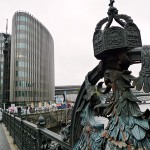

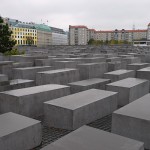
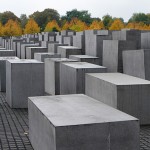
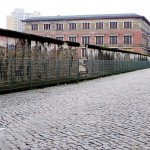
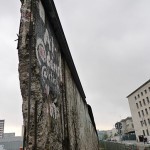
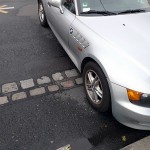
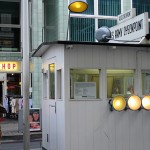
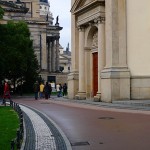
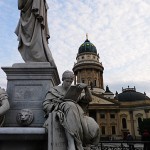
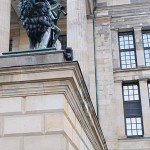
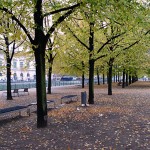
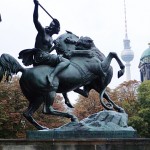
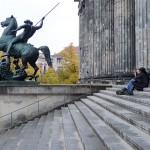
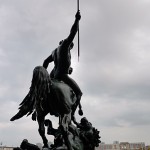
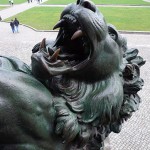
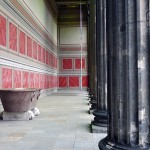
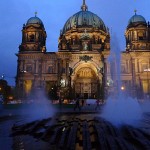
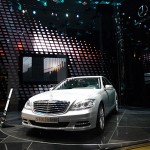
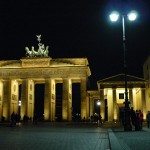
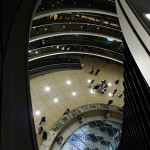
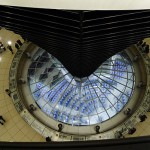
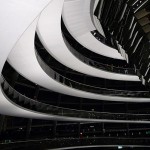
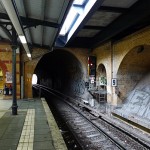
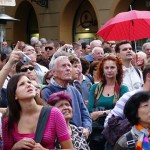
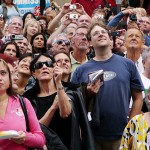
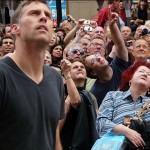
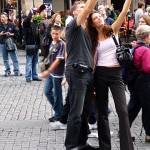
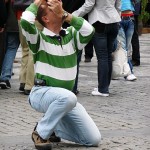
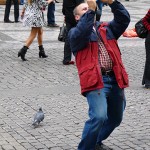
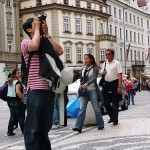
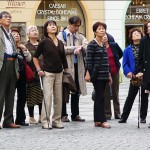
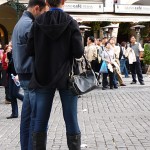
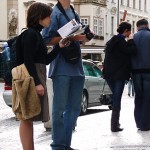
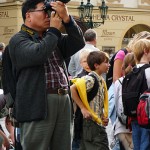
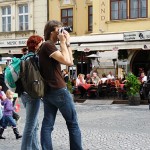
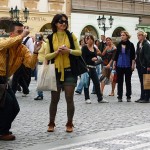
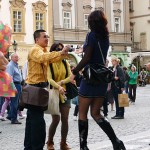
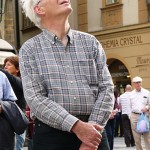
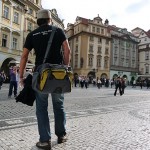
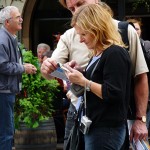
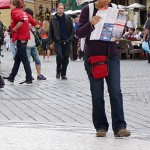
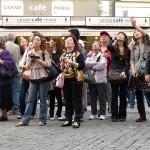
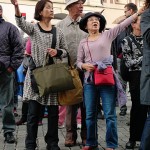
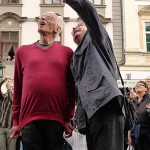
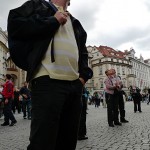
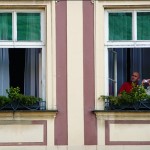
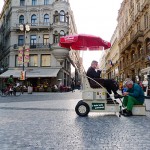
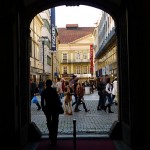
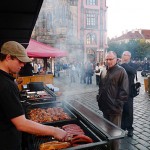
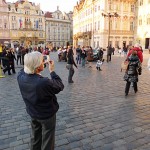
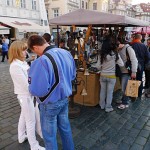
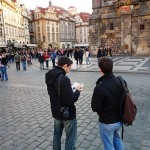
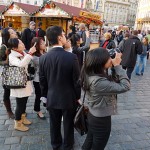
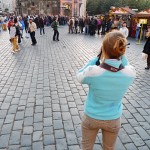
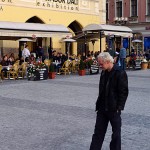
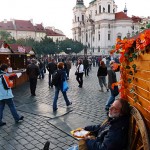
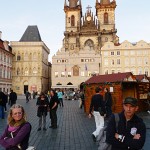
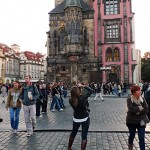
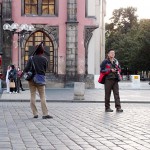
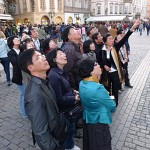
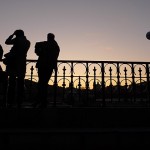
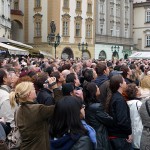
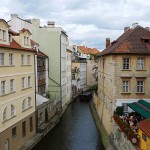
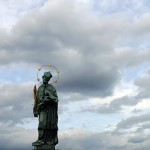
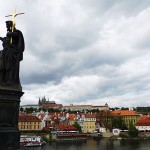
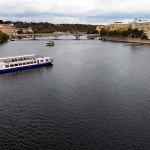
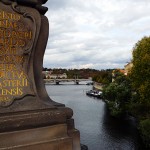
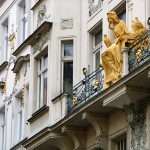
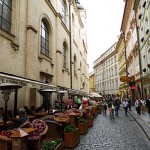
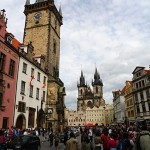
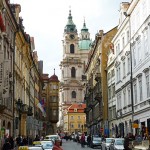
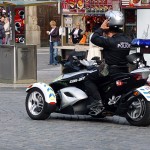
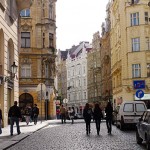
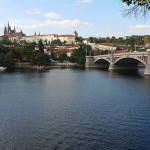
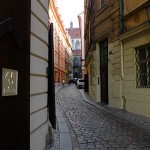
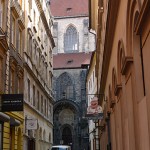
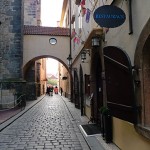
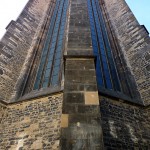
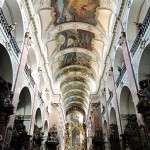
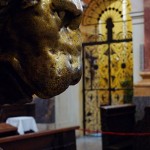
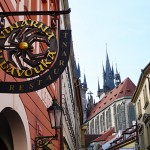
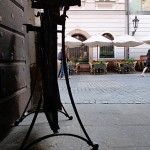
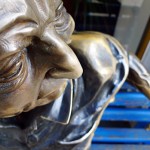
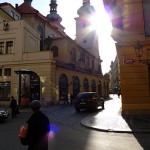
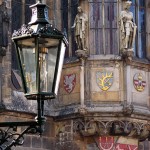
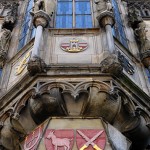
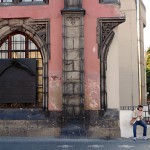
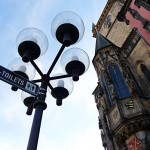
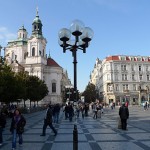
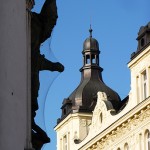
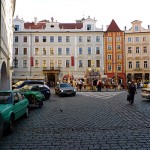
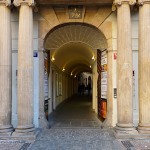
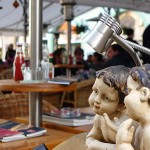
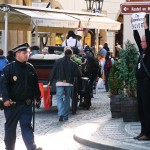
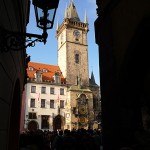
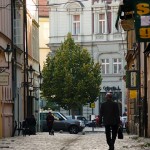
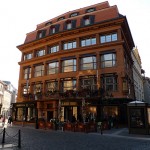
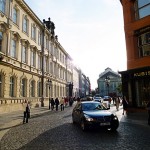
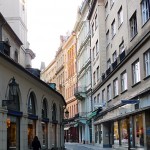
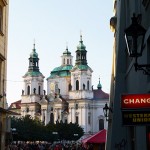
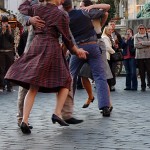
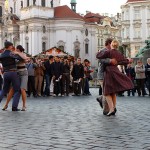
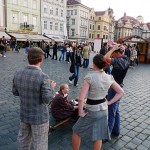
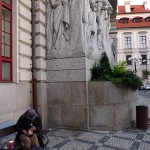
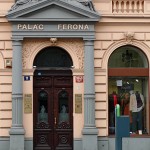
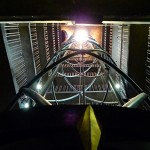
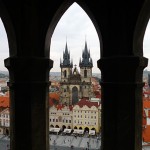
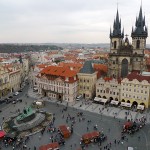
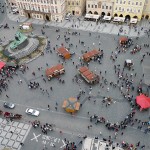
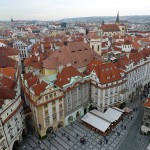
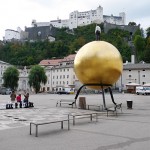
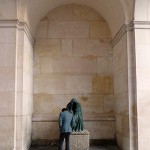
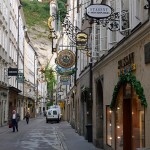
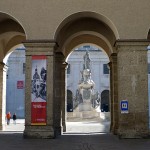
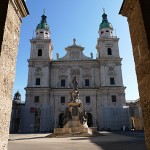
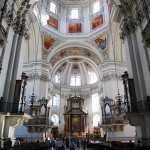
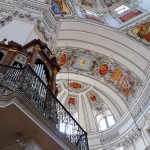
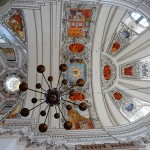
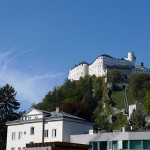
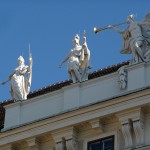
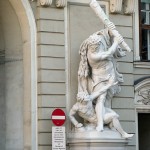
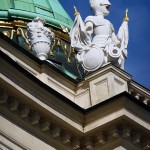
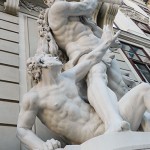
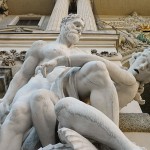
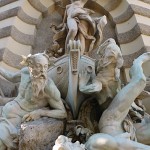
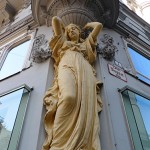
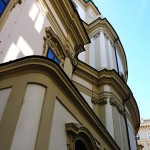
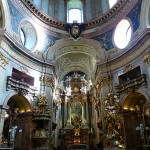
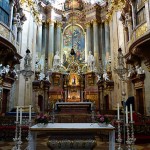
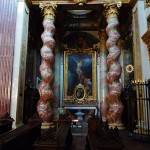
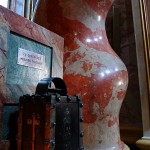
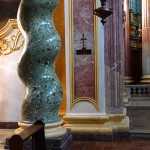
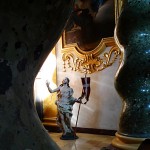
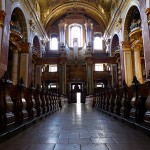
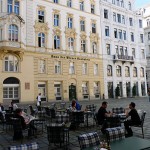
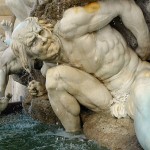
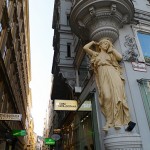
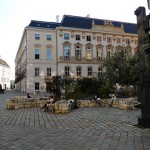
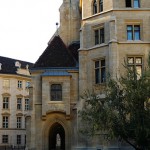
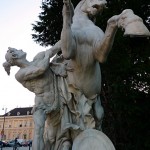
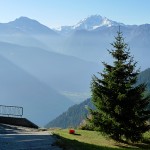
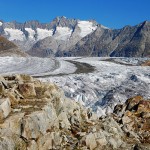
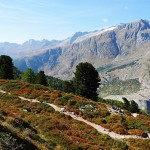
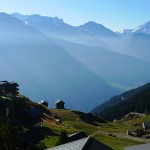
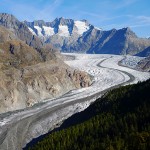
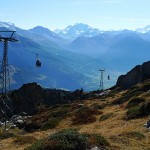
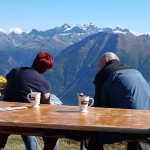
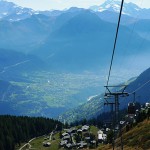
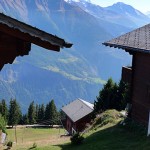
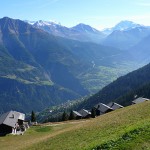
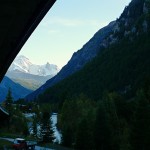
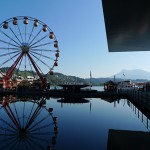
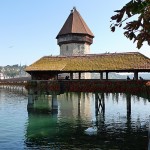
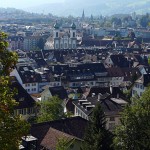
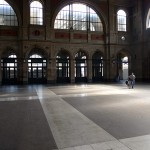
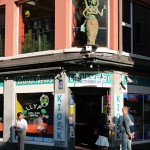
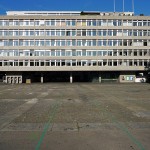
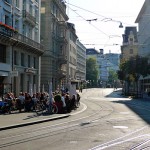
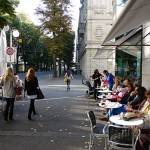
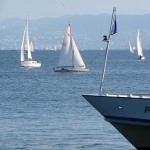
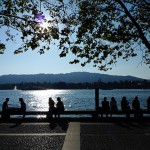
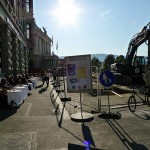
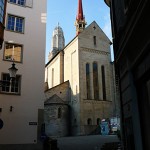
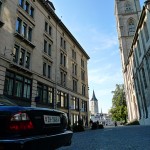
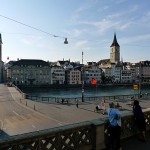
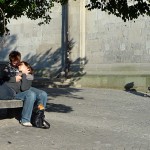
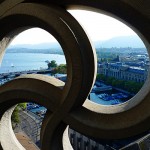
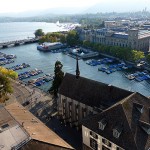
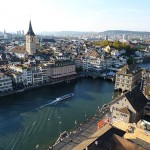
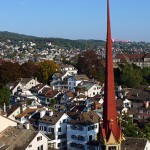
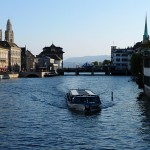
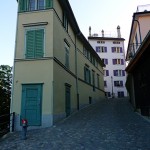
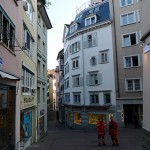
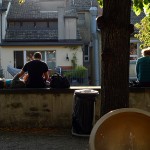
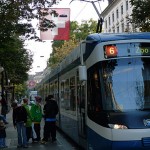
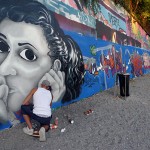
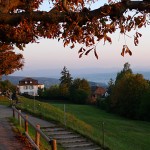
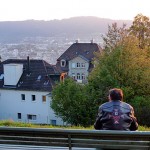
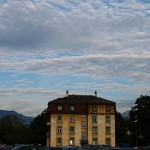
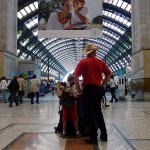
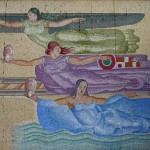
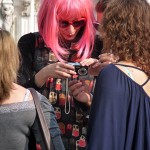
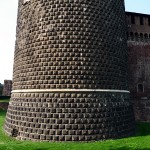
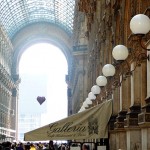
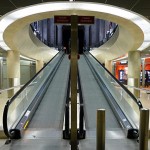
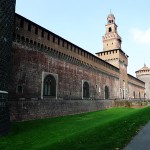
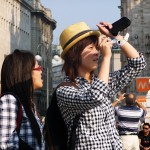
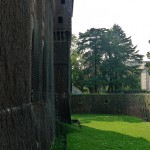
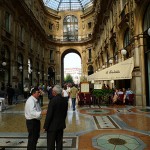
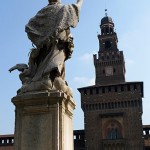
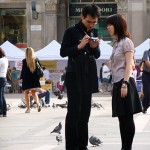
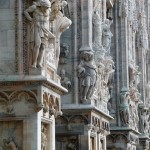
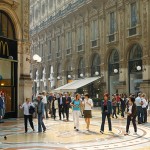
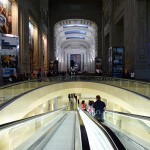
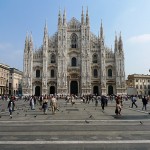
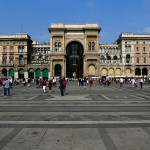
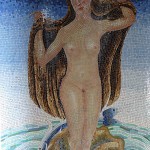
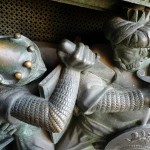
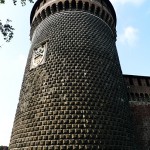
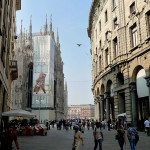
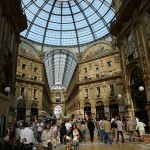
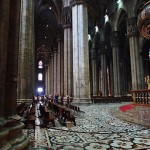
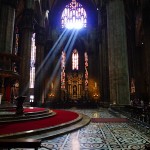
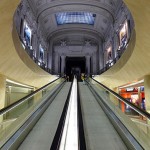
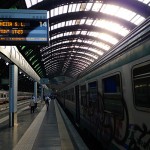
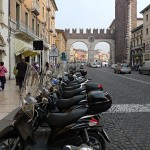
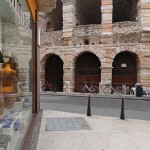
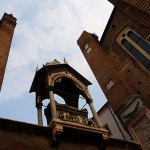
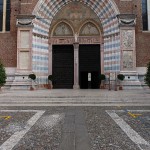
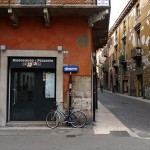
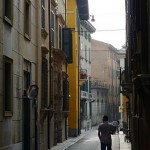
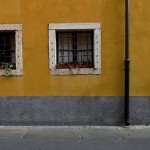
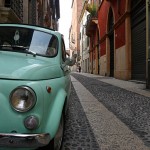
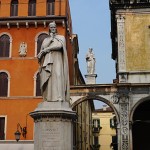
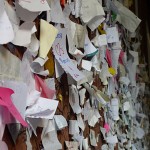
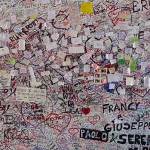
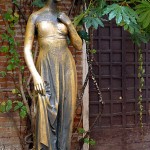
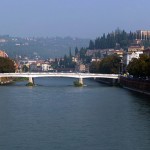
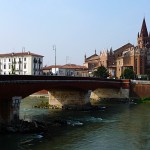
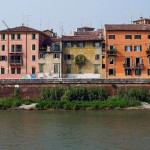
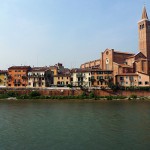
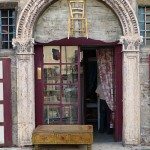
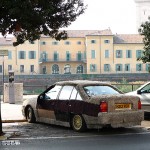
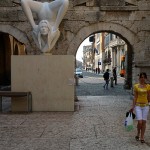
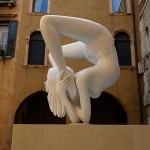
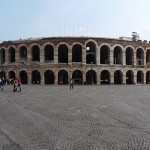
 Click to subscribe via RSS feed
Click to subscribe via RSS feed
